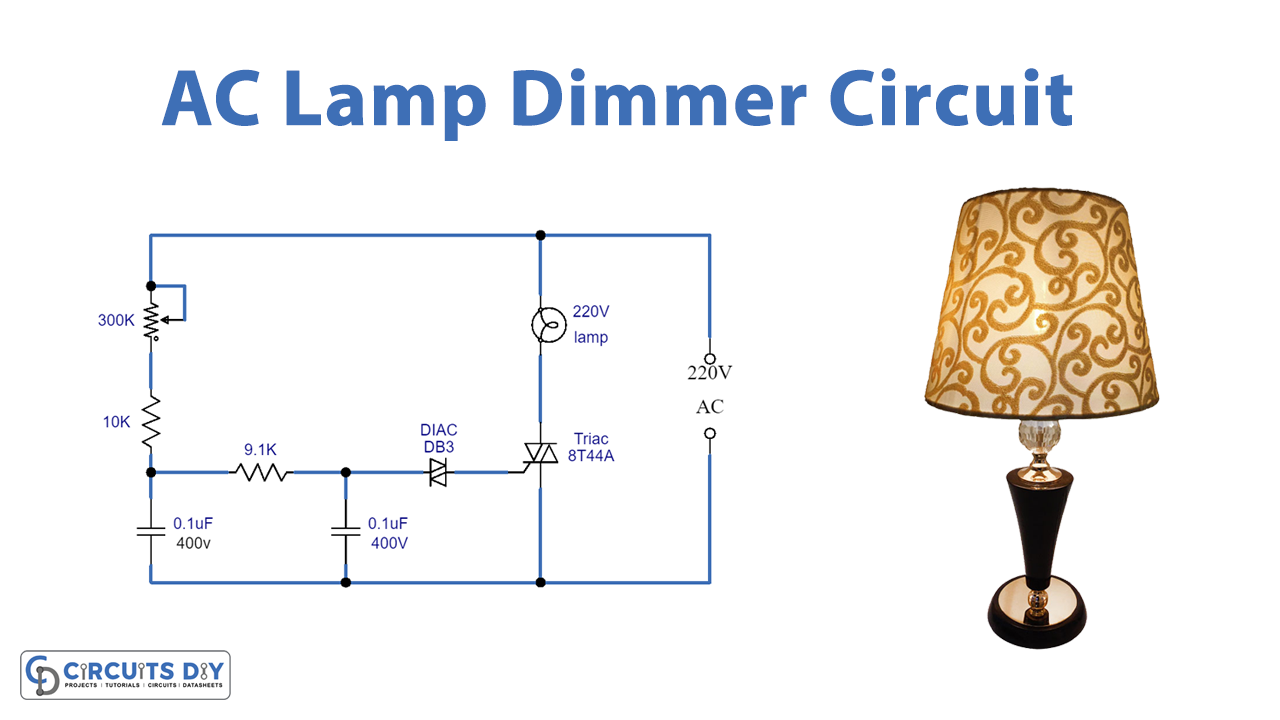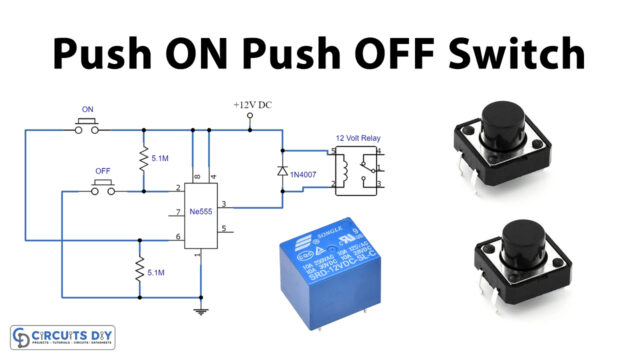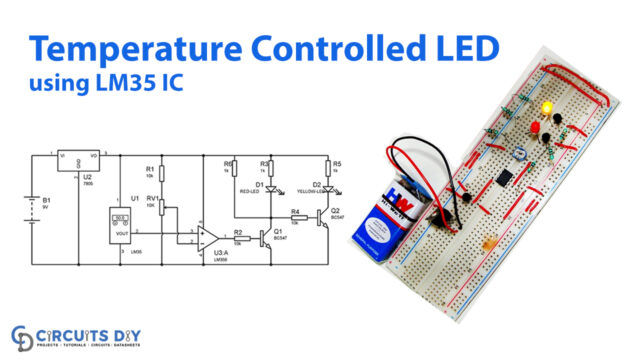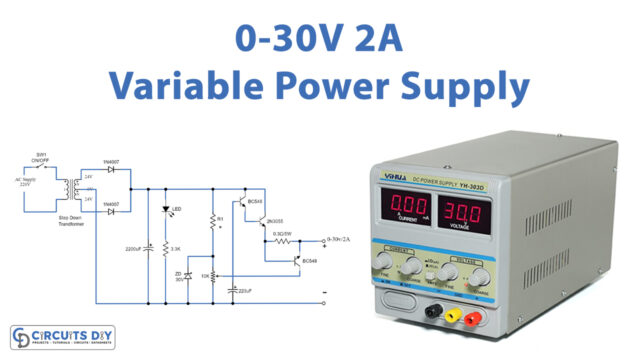This project demonstrates the best way to control 220V AC light brightness. The TRIAC is a three-terminal part (terminal 1, terminal 2, and entryway), utilize in this project to control the current-carrying load.
This basic 230V AC lamp dimmer circuit utilizes to control the brightness of a 100-watt light. The dimming of the AC lamp requires numerous events. For instance, it may be utilized at sleep time to diminish the light to an ideal level. Dimming of the light can utilize for design purposes and for energy saving as well. It is a low-cost dimmer circuit for modifying the light brightness of glowing Halogen Lamp and Light Bulb load up to 250 W.
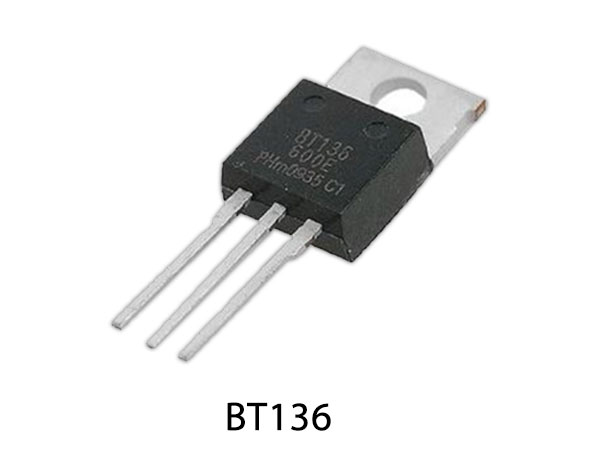
Hardware Components
The following components are required to make 230V AC Lamp Dimmer Circuit
| S.no | Components | Value | Qty |
|---|---|---|---|
| 1. | Triac | BT136 | 1 |
| 2. | DIAC | DB3 | 1 |
| 3. | Variable Resistor | 300K | 1 |
| 4. | Resistor | 10K, 9.1K | 1, 1 |
| 5. | Ceramic Capacitor | 0.1µF, 47nF | 1, 1 |
| 6. | AC Lamp | 220V | 1 |
| 7. | AC Power Supply or AC adapter | 220V | 1 |
BT136 Pinout
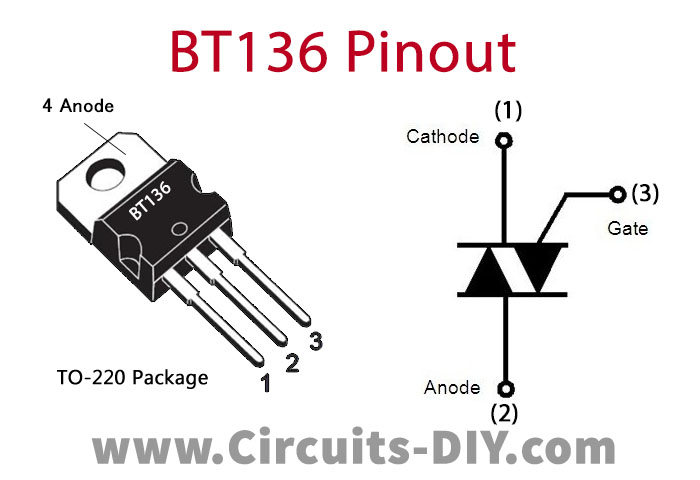
For a detailed description of pinout, dimension features, and specifications download the datasheet of BT136
230V AC Lamp Dimmer Circuit
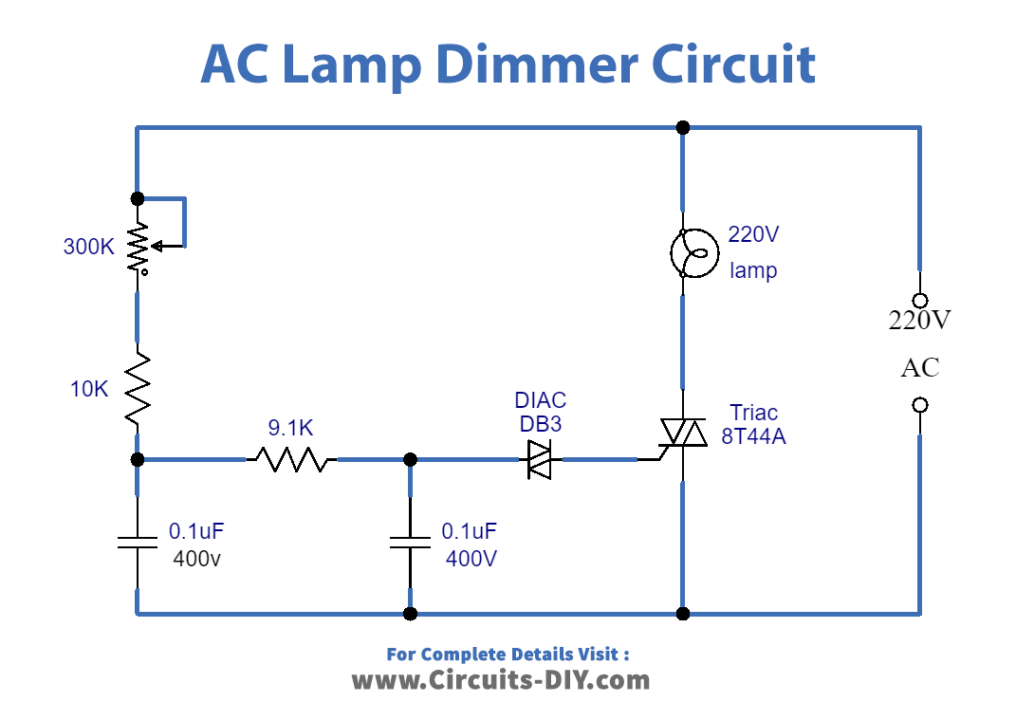
Working Explanation
This circuit utilizing not have many components and can construct easily. The 300K variable resistor utilizes to control the output voltage of the circuit or the brightness of the lamp. It is directly associated with the AC main line. It is imperative to utilize an appropriate e area for the circuit and a decent plastic knob for the 300K potentiometer.
Many purposes of this circuit are at AC mains voltage. It could give you a deadly shock if you are not cautious while working. On the off chance that you don’t think a lot about working with AC line voltages don’t endeavor to build this circuit.
Applications and Uses
The circuit can be utilized for dimmer purposes. It can likewise be utilized as:
- To control the heat of your soldering iron
- It can use at bedtime to diminish the lamp brightness and ultimately saves electric energy.
- Use in controlling the speed of AC engine

